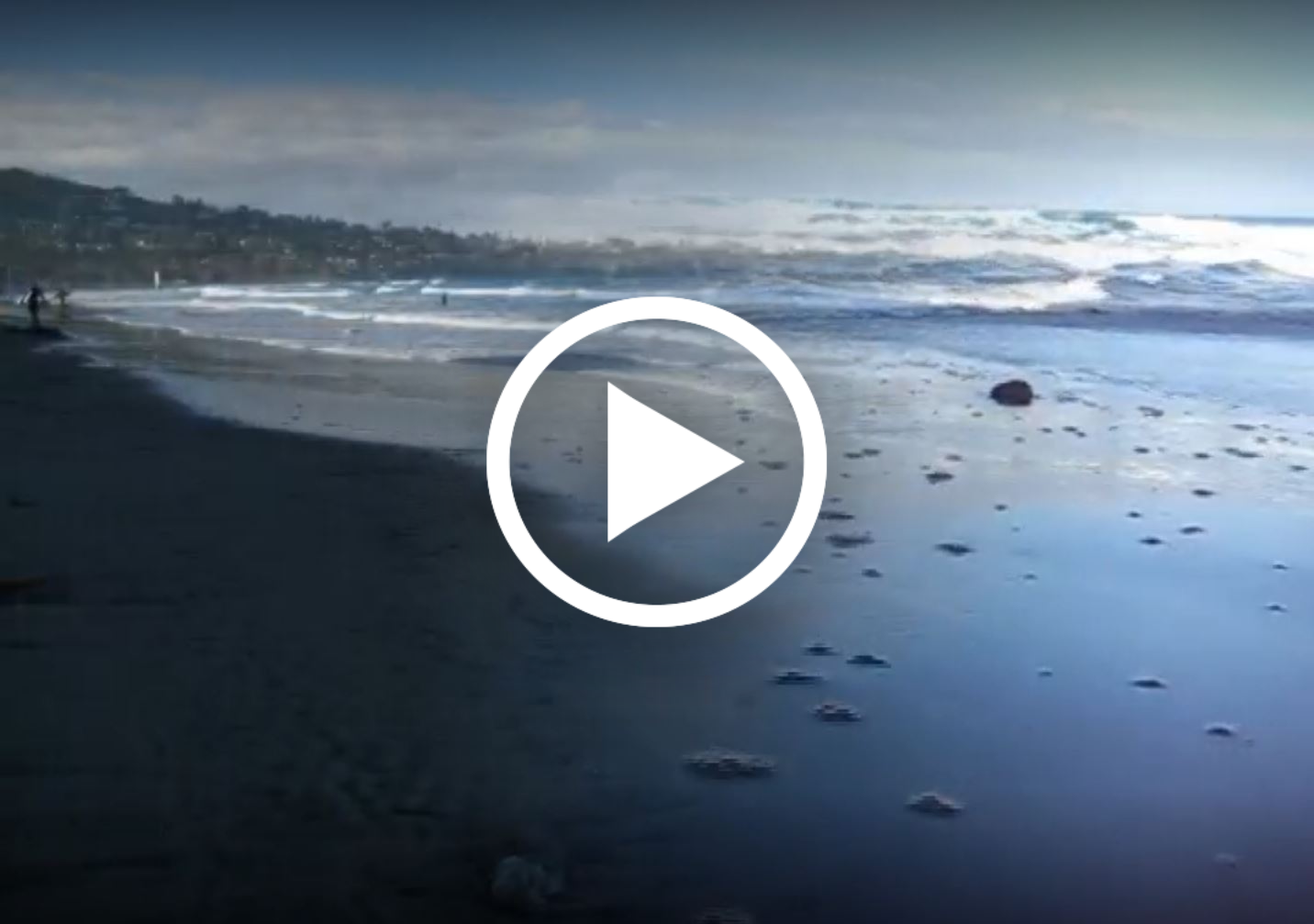Storm Water Management Program
Learn how UC San Diego's Storm Water Management Program helps prevent water pollution.
Storm drains are for rain
All outdoor drains are storm drains and are meant only for rain.
Everything that flows into a UC San Diego storm drain goes untreated directly into nearby waterways such as the Pacific Ocean, Rose Canyon Creek, and Los Peñasquitos Creek. Pollutants picked up by storm water can prevent recreational use of waterways and harm the habitat for fish, other aquatic organisms, and wildlife.
Report non-storm water discharges
Anything that discharges into a storm drain that is not composed entirely of storm water is a non-storm water discharge (e.g., irrigation water runoff, clean tap water).
-
Report non-storm water discharges into UC San Diego storm drains:
- During business hours: Facilities Management wsc@ucsd.edu or call (858) 534-2930
- After business hours: Call UC San Diego Police: (858) 534-HELP (4357)
UC San Diego Storm Water Management Program
UC San Diego's Storm Water Management Plan (PDF) aims to prevent or reduce the potential discharge of pollutants into UC San Diego storm drains.
The program describes:
- Pollution prevention requirements for campus personnel (see below)
- Best Management Practices (BMPs)
- Post-construction BMPs required for projects that create and/or replace 2,500 square feet or more of impervious surface
- Source control BMPs for outdoor activities that may potentially release pollutants into UC San Diego storm drains
- Treatment control BMPs implemented at UC San Diego to prevent coastal water pollution
- Contractor and visitor responsibilities (see below)
- Storm water monitoring
- Emergency spill response procedures
- Education and outreach
Pollution prevention requirements
- Do not discharge anything into a storm drain, including clean tap water. Only rain is permitted in a storm drain.
- Keep outdoor work and storage areas clean and orderly.
- Cover or protect storm drain inlets from outdoor work activities as needed.
- Maintain spill control and cleanup materials and clean up outdoor spills immediately.
- Do not store machinery, equipment, or vehicles over storm drains.
- Keep outdoor trash cans and bins closed.
- If water is used to clean, do not allow wash water to get into a storm drain.
- Fueling activities must be overseen by the equipment operator at all times.
- Use drip pans under leaking equipment.
Construction and Post-Construction Storm Water Management Requirements
- Storm Water Management Requirements for Construction Projects (PDF)
- Post-Construction
storm water management measures required for projects that create and/or replace 2,500 square feet or more of impervious surface
Contractor and visitor responsibilities
Contractors, service providers, and non-employee visitors at UC San Diego are responsible for reviewing UC San DiegoStorm Water Pollution Prevention Best Management Practices to ensure outdoor work activities, equipment, and materials storage practices do not result in a discharge to a storm drain, and will not introduce pollutants to
- UC San Diego Storm Water Pollution Prevention Best Management Practices Handbook (PDF)
- Hazard Awareness and Pollution Prevention for Contractors and Visitors at UC San Diego (PDF)
Get the word out
Print a Storm Water Pollution Prevention brochure and clean water flyer for distribution:
- Storm Water Pollution Prevention brochure (PDF) Note: Set your printer on landscape orientation. Double-sided printing is preferred.
- Be A Clean Water Leader at UC San Diego! (PDF)
Gauge your awareness of what causes storm water pollution by taking this survey
Training
Annual Shop & Studio Environmental Compliance and Hazards Awareness training – required for UC San Diego operations and maintenance staff.
Environmental Compliance/Pollution Prevention training – required for UC San Diego building services/custodial staff.
Environmental Stewardship training – recommended for Department Safety Officers.
Regulations and policies
- UC San Diego Storm Water Pollution Prevention Best Management Practices Handbook (PDF)
- Phase II General Permit for Waste Discharge Requirements for Storm Water Discharges (PDF, 289 pages) - UC San Diego is subject to Section F, effective July 2013
- PPM 516-9, Environmental Pollution
- California Ocean Plan (PDF), State Water Resources Control Board, California Environmental Protection Agency
